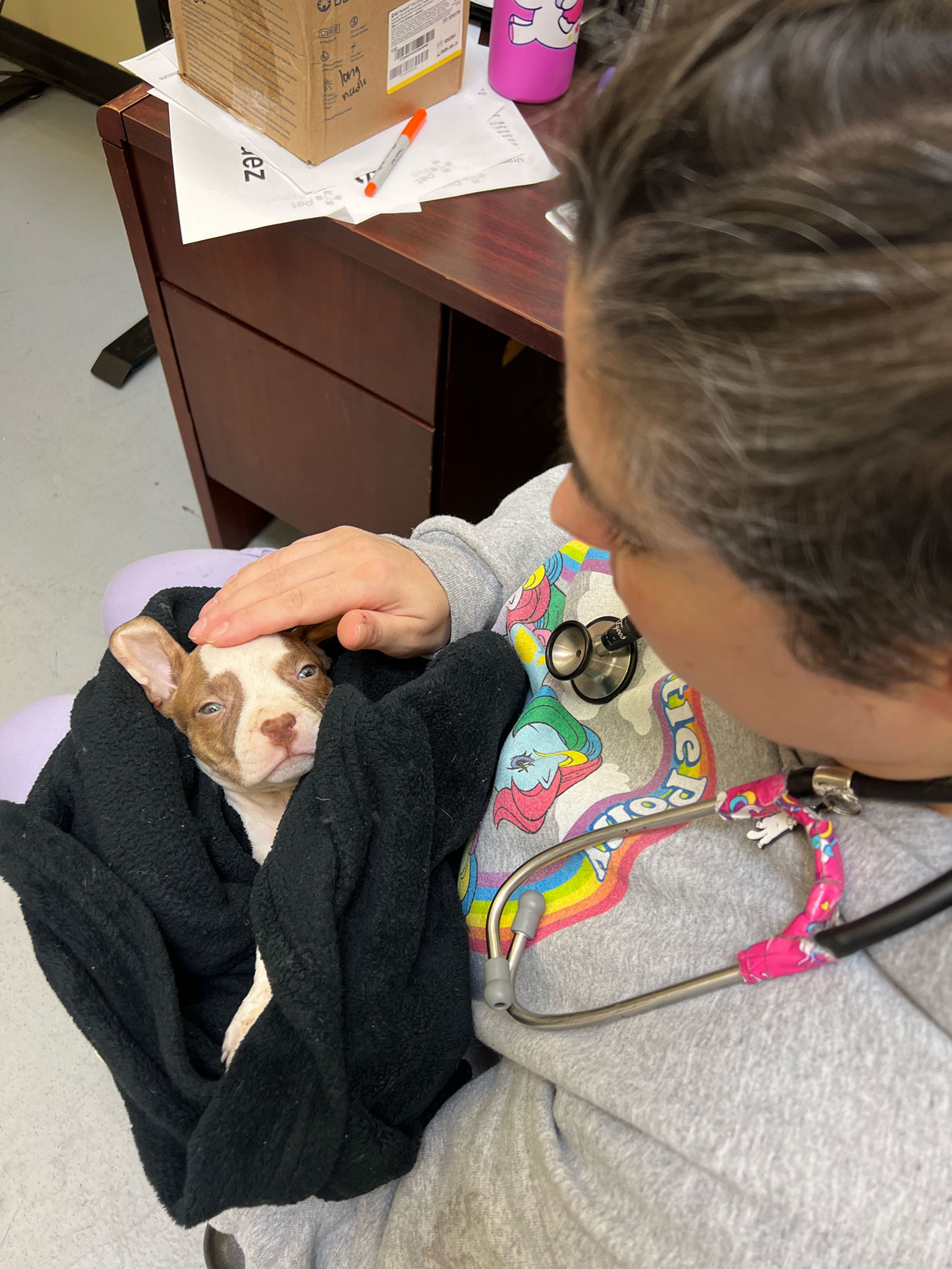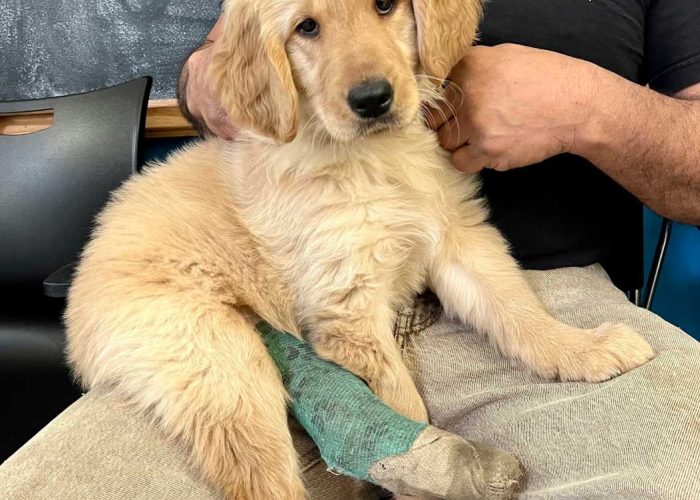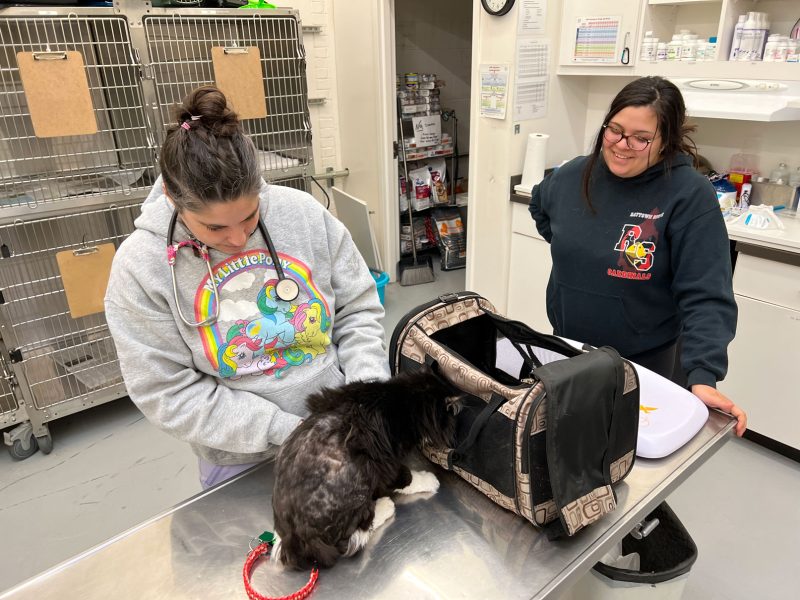
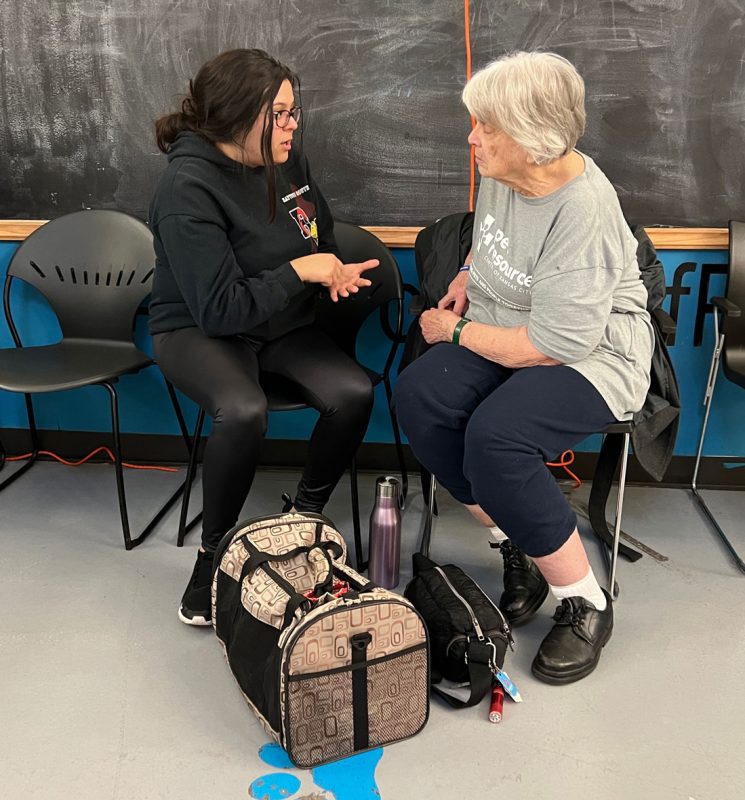
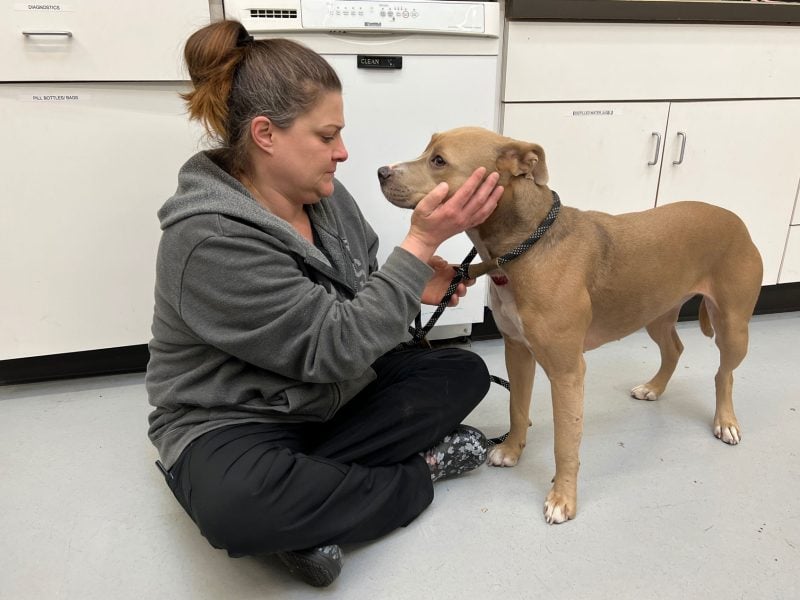
Tuesday starts slow, which is good. Rachel can do her ordering to make sure urgent care is fully stocked. It’s not as easy to order for as some other departments because you don’t really know what kind of situation is going to come through the door. And in truth, we’re usually too busy for Rachel to get a lot of administrative time, so she’s happy for a moment to get it done.
April, who works check-in for urgent care, sees it as an omen.
“I feel like when it’s slow early, everybody comes in at once mid-morning,” she says.
Today, it turns out she’s right.
A Natural Step
Our urgent care program is a natural outgrowth of what we were already doing. Because we’re known in the community as a trusted resource that tries to help no matter what, people were already bringing urgent care cases to us. For a while we had a program where we could subsidize some or all of the cost of care at a full-service clinic, and that was helpful, but we always had the feeling that we could do more.
Since the onset of the pandemic, full-service, private practice vets have been booked out sometimes months in advance. That means that even if you’re a regular client, when an urgent issue comes up, they might not be able to fit you in. If you aren’t a regular client? Forget about it.
The other option is an emergency clinic, which… you’re looking at a decent price tag just for stepping in the door. And you need to pay right away. This immediately disallows a wide swath of pet owners from getting the help they need.
“Prior to opening urgent care, one of my pets got a blockage, and that was the first time I’d had an urgent matter with my pet,” says our Chief Operating Officer Kristin Roth. “When I started reaching out to the various urgent cares in town, I realized that I was really going to struggle to foot that bill. I knew that if I was struggling, many of the clients we serve would absolutely be unable to obtain those services. From further talking to these urgent cares, they are not in a position to be able to offer that financial assistance, and it can be devastating for them to have to turn someone away, so by us being here they do have a referral source for those clients who are coming in who can’t afford those services”
How we made it possible
This is the general idea for the program. There’s a very big gap between private practice veterinarians and emergency care, and many, many pet owners live in that gap. This says a number of things about the animal welfare industry and the way it’s set up, but the main thing it says is that animals are suffering, unable to get the care they need when they need it.
“We received an opportunity through Petsmart to get some grant funding to start up our urgent care, initially just making it a daytime urgent care,” says Kristin. “It’s in an old kitchen in the building and it’s not necessarily ideal but it allows us to take care of the sick and injured pets in our community. We will eventually move to a new building and be able to expand hours and services.”
And it’s been good. A little too good, maybe.
Let us explain.
We haven’t marketed it. It’s like Bruno; we don’t talk about it. The reason? Without having told a soul, we are overfull every single day. That’s how needed something like this is. On the day I shadow in urgent care, we close at 11:30 because we’ve got enough patients and procedures scheduled for the day that we can’t take anything else on. Advertising would almost become false advertising because how could we possibly see everyone?
Parvo tests. Rechecks for ongoing problems. A cat feeling extreme pain because of hyperesthesia. Sedating pets and stitching up wounds. A dog we saw last week who isn’t getting better, has more fluid in his lungs, and whose condition indicates he might have to be euthanized. X-rays to find foreign bodies swallowed by a dog. Leg problems. A sweet border collie with ear canals so swollen we need to treat the swelling first before we can even see inside. A dog sold by a disreputable breeder (who then disappeared), leaving behind a lethargic, traumatized animal that is afraid of everything. A coughing Chihuahua that takes twenty minutes to calm down so that his chest can be listened to. A pom that got in a fight and was bitten on the eye and might have to have it removed. All these cases show up in one day, most of them close together, just like April said.
And their humans sit and wait, some in their cars, some in the lobby, their faces lined with worry. I know that feeling. I’ve been there. It hurts to see.
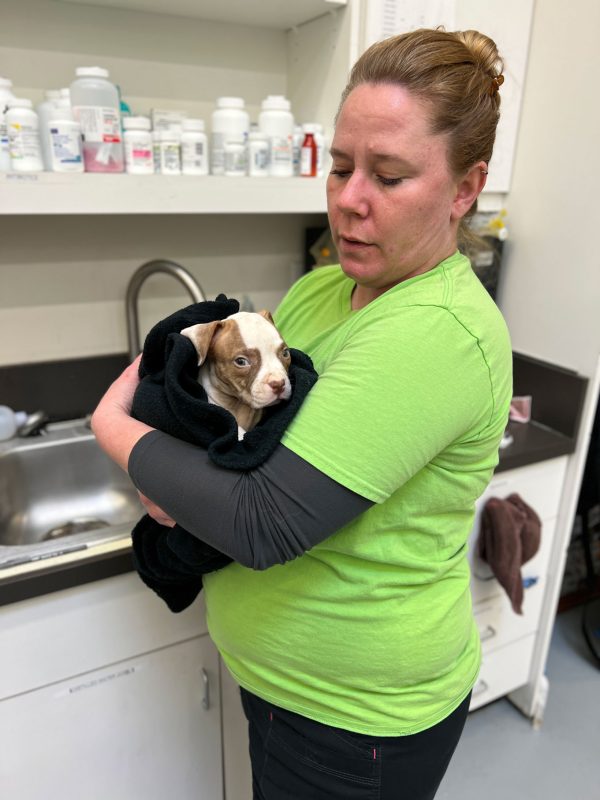
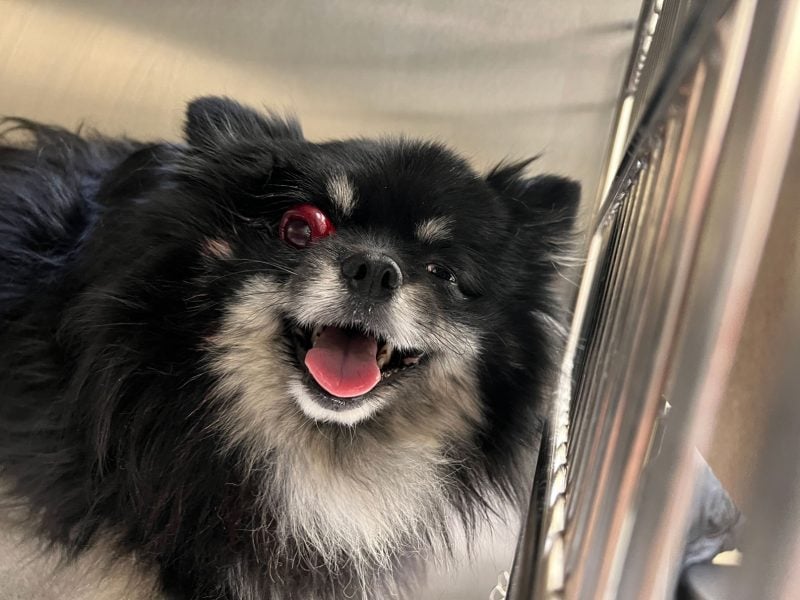
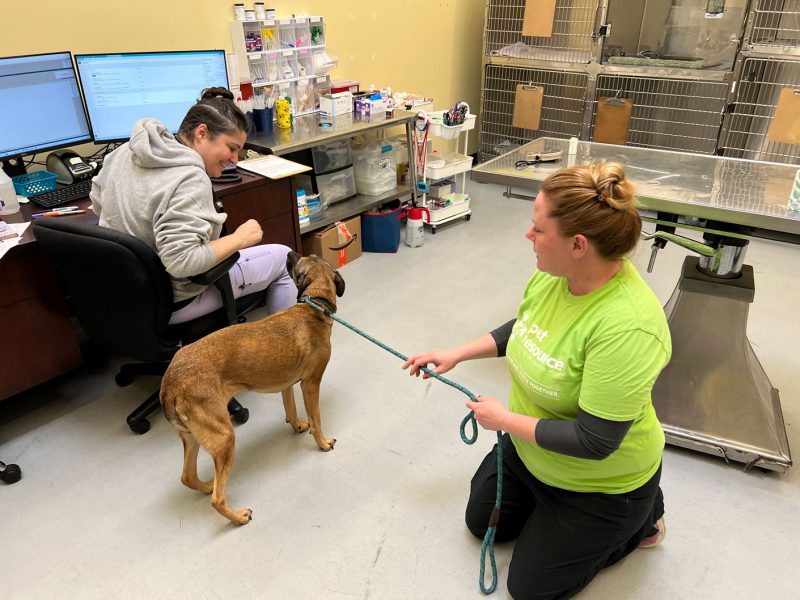
A solid team makes all the difference
You don’t do this kind of work without a team that works well under pressure, and we’re very, very happy with the team members who are tasked with handling this new, untested arena for us.
The doctors rotate out regularly, but the day I’m there it’s Dr. Goldston, who is incredibly kind, compassionate and really, really level-headed. She doesn’t blink at the cases she’s presented with, and takes her time with every pet, trying to make them as comfortable as she can. That manic, terrified coughing Chihuahua? It ends up in her lap by the end of things, resting. She even takes time to explain situations to me, even though I’m doing my best to not be in the way.
Rachel is the rock of the department. She’s there every day providing amazing support for the doctors while also working with clients to find solutions they can afford. Her way with animals is pretty incredible, and she brings years of experience in animal welfare to her interactions with clients and staff.
While April is new, she’s taken to her job as the face of urgent care like a duck takes to water. It’s not an easy thing to handle patients waiting both in their cars and in the lobby, all of whom are worried about their pet. That can be an emotional powder keg, and she handles it with a ton of grace and a genuine concern for everybody.
Watching them working basically nonstop all day, the sheer volume and variety of cases seems like an unending wave of problems. Me personally, I freeze up under that kind of stress. But I watch the team’s wheels turning in their heads constantly, figuring out solutions, finding ways to address issues in a way that will be affordable for the owner. We want to set people up for success with their pets. Urgent care helps us be there when they need us the most, and I never see the team falter in that mission.
What the future looks like
So the question was never, “Can we do urgent care?” It was more, “What will it look like?” and “How do we provide the most affordable urgent care?” We’re still figuring it out.
The issue as it stands right now is that there are a number of cases we’re seeing that aren’t urgent, technically. That’s because of that big gap in services I was talking about earlier. Pets have problems that aren’t “urgent,” but that are chronic, ongoing issues that the owners can’t afford to take to a full service vet.
These are the types of situations where people end up relinquishing a pet because they can’t afford to do right by them. But that just puts them in an overcrowded shelter, and if they’re older, there’s very little chance that they’ll end up in a forever home, because people are generally looking for a younger pet.
So we take those cases on while prioritizing truly urgent situations that need help immediately.
It’s a seemingly endless parade of problems. Starting up this urgent care has brought a lot of new things into this clinic. Situations that some of us have never dealt with before. There’s more anguish. More death, for certain. This isn’t the light and fluffy world of vaccinations. This is life and death. It weighs on me heavily sometimes, and knowing that my coworkers are wading through these situations every day hurts. But I know it’s what they want to do, where they want to be.
I ask Dr. Goldston what she enjoys about urgent care, and she responds without even thinking about it.
“Being able to help the ones who need it the most and don’t have the resources,” she says. She stops typing her notes on the account she’s updating and looks over at me. “Even when they need euthanasia, being able to provide them somewhat of an answer.”
So we will move forward one answer at a time, and grow this program so we can help more pets and people than ever before, in ways we never thought we could.
The city needs it.
